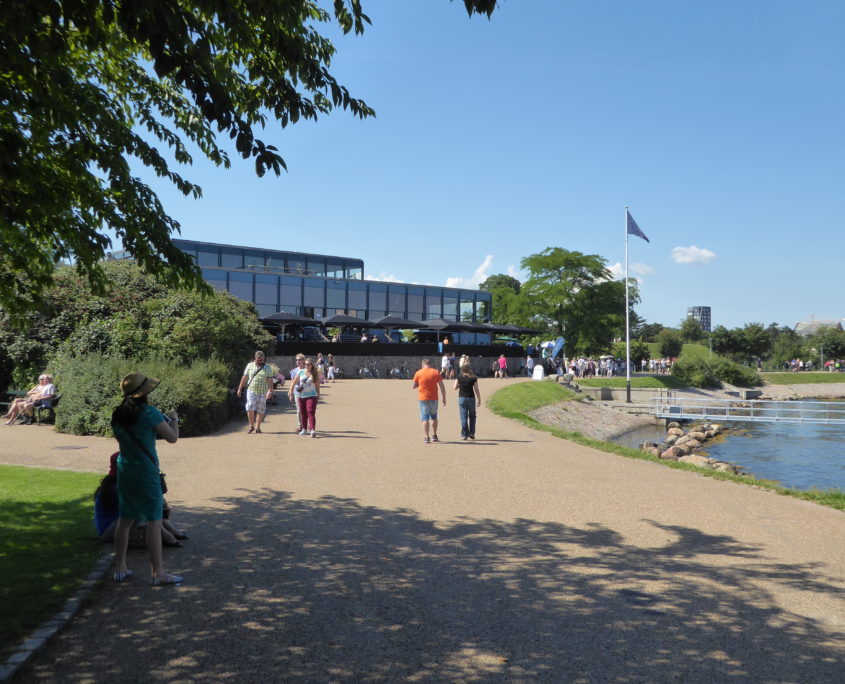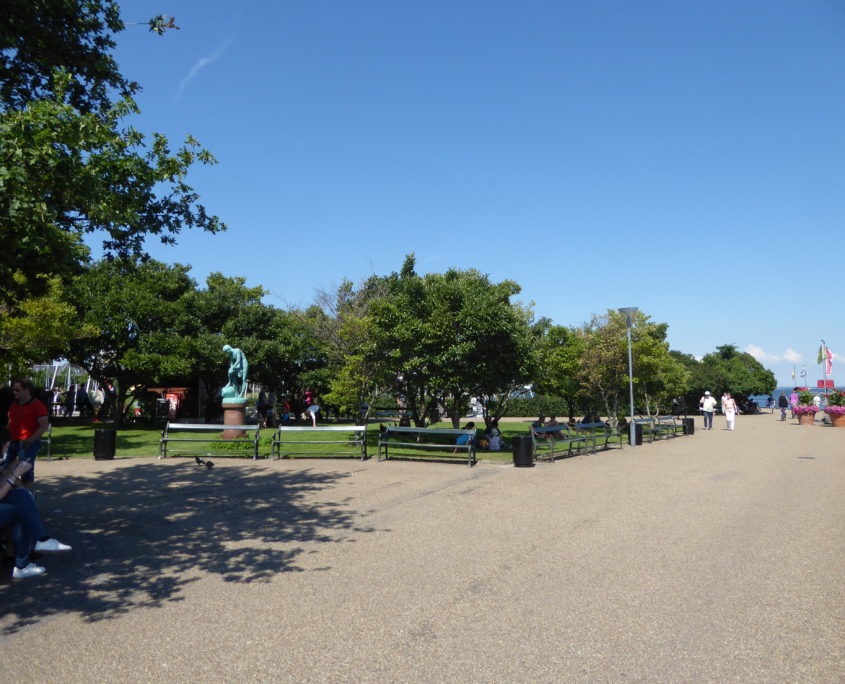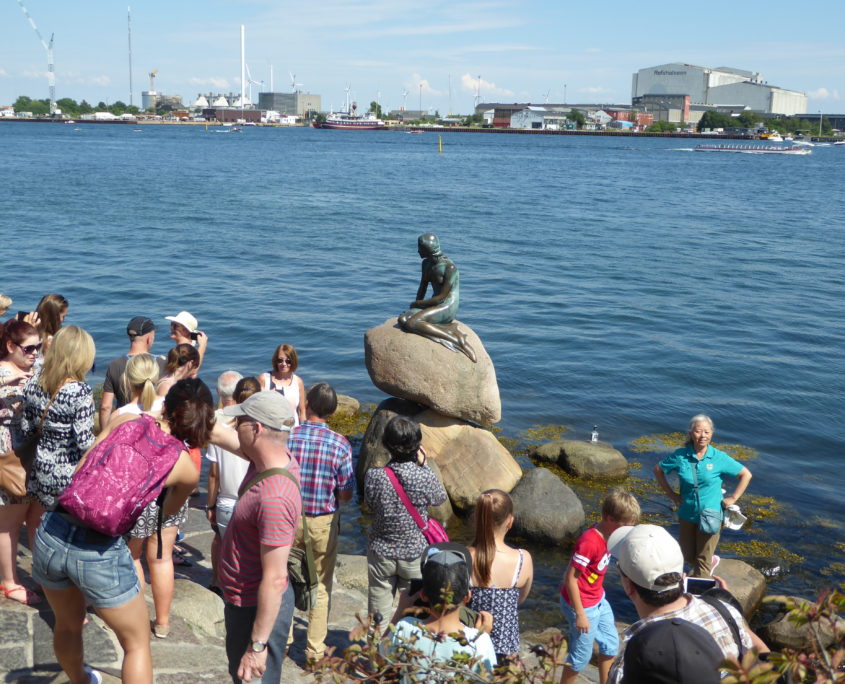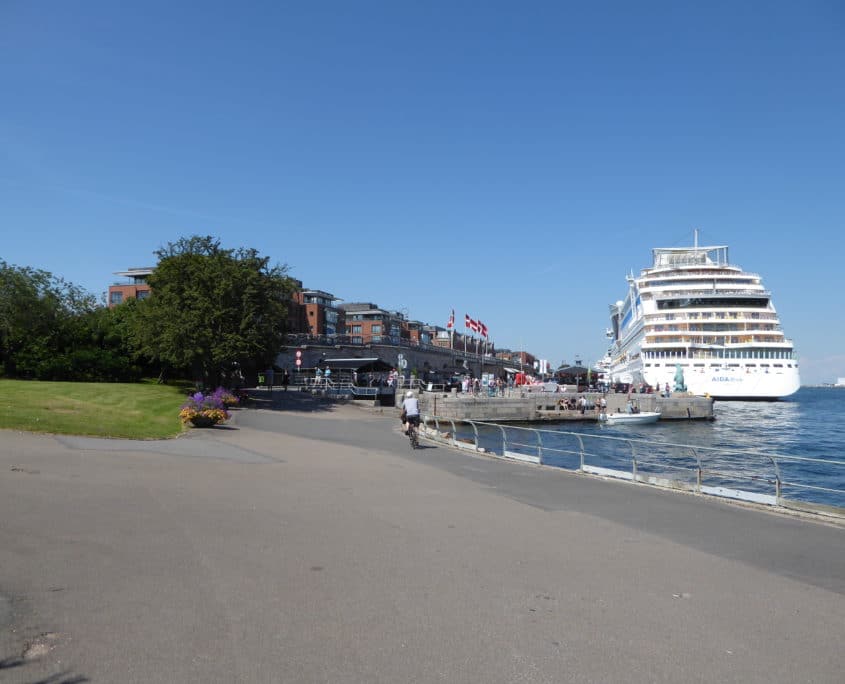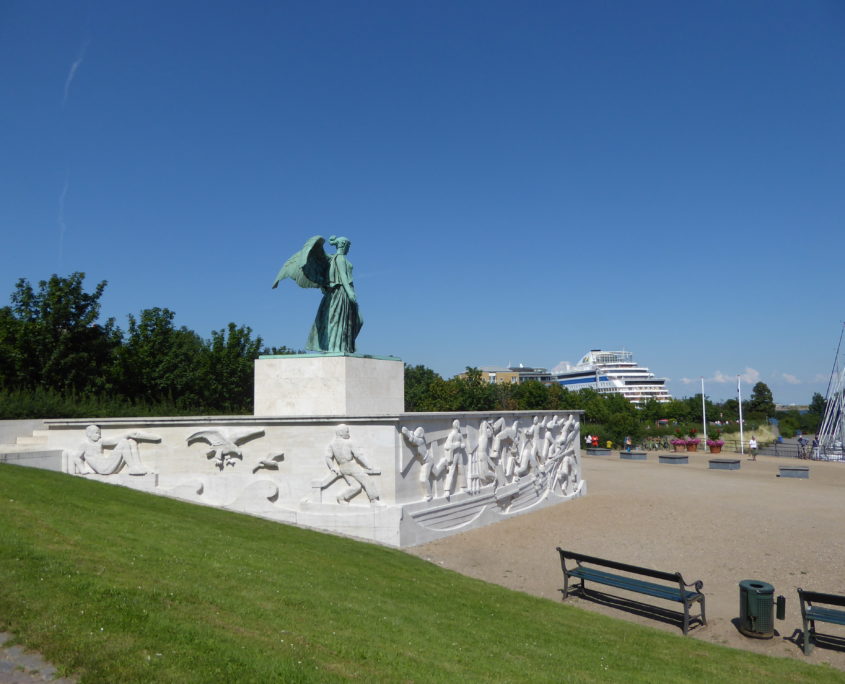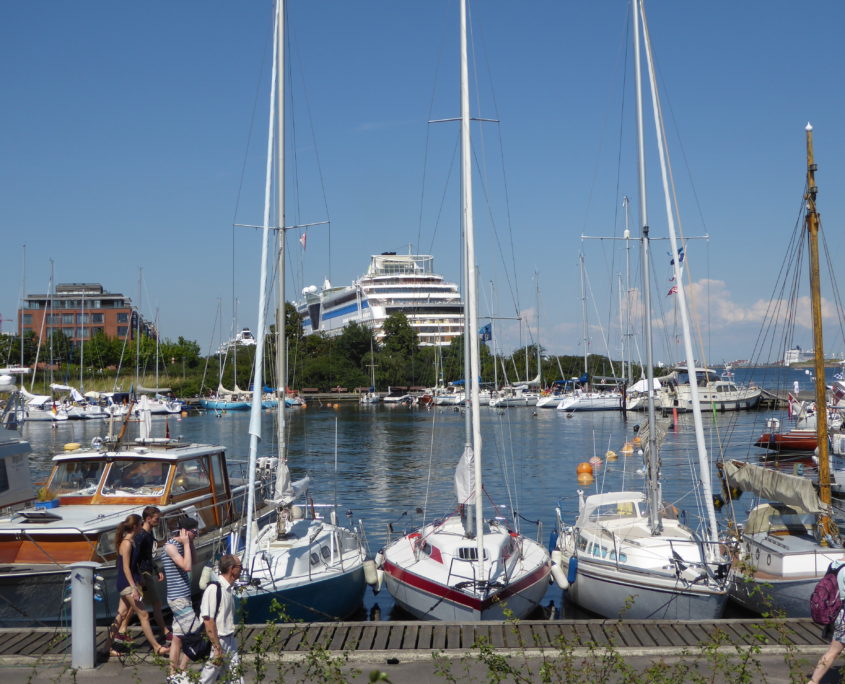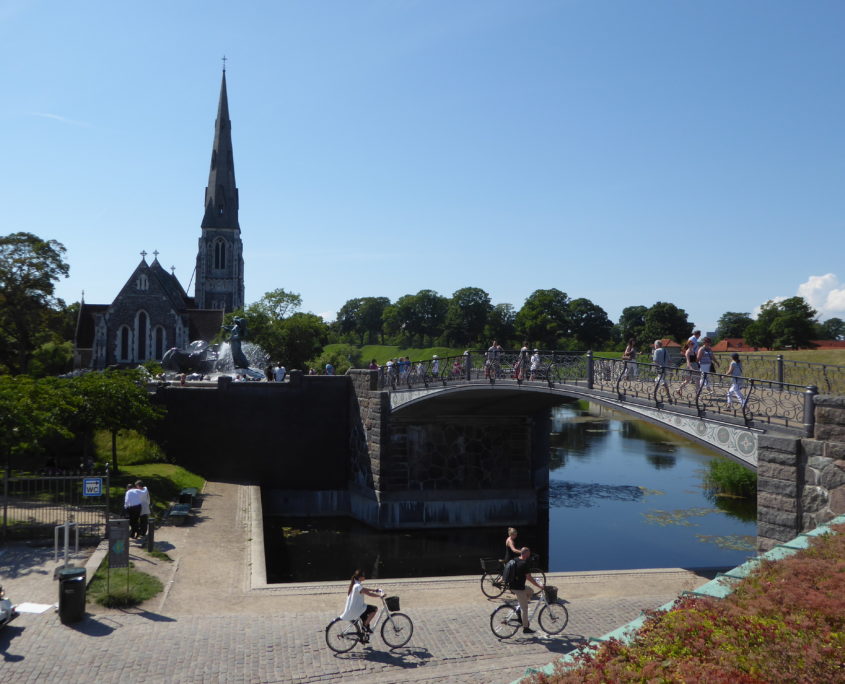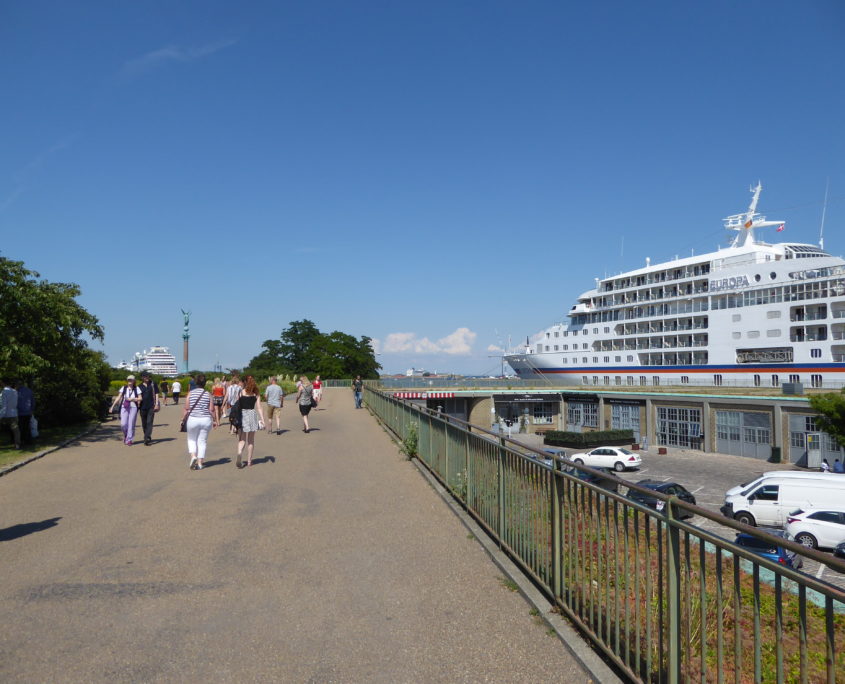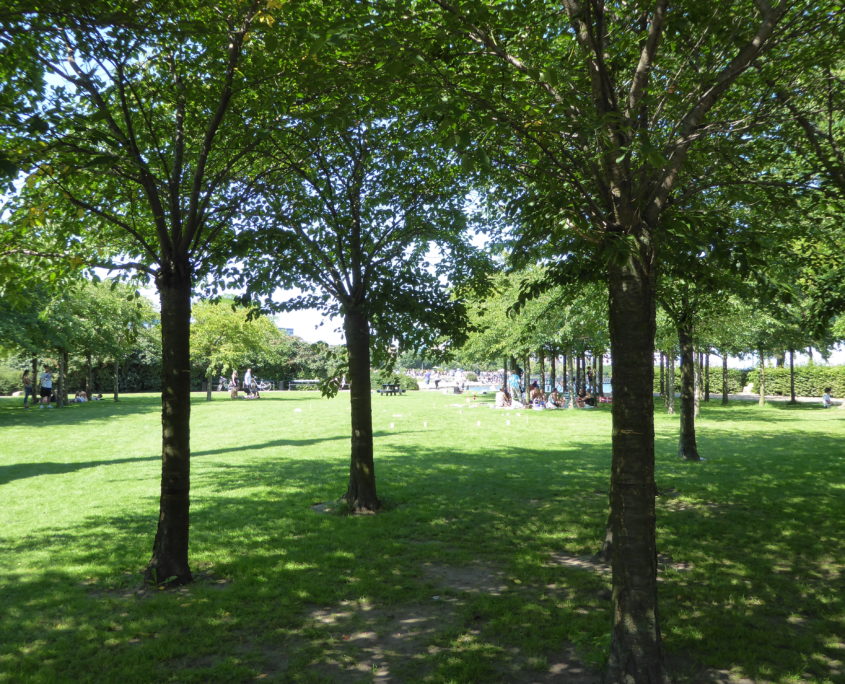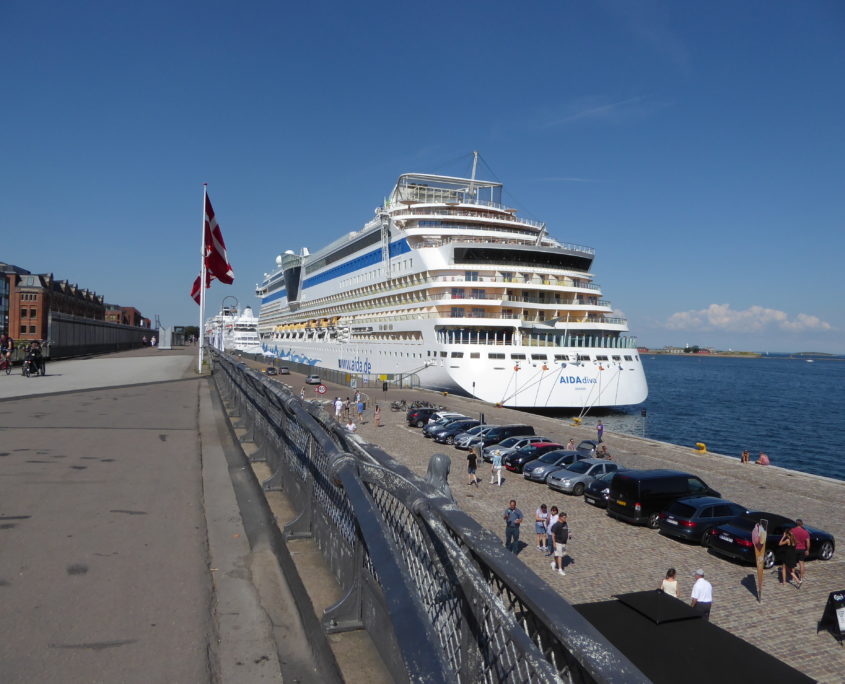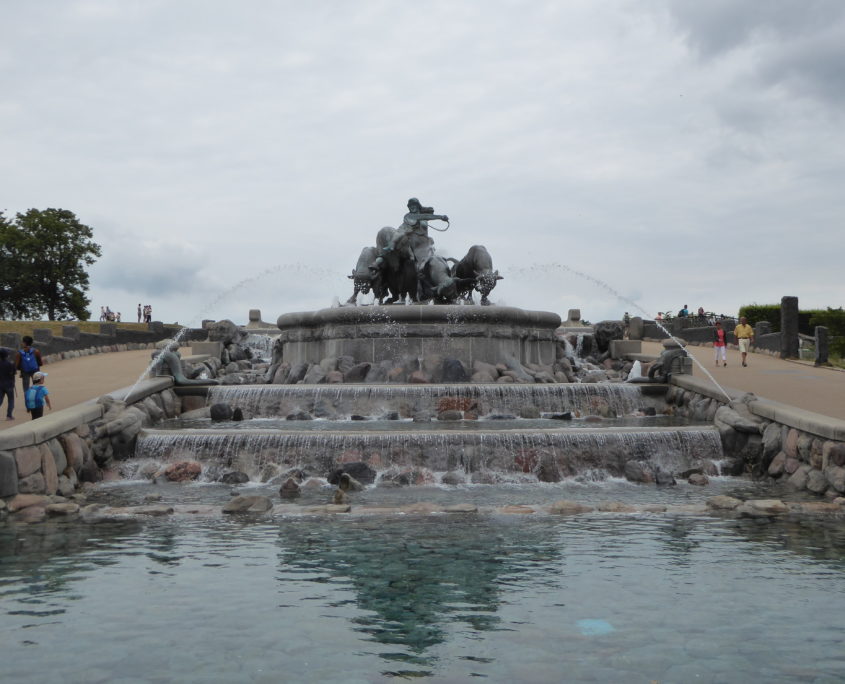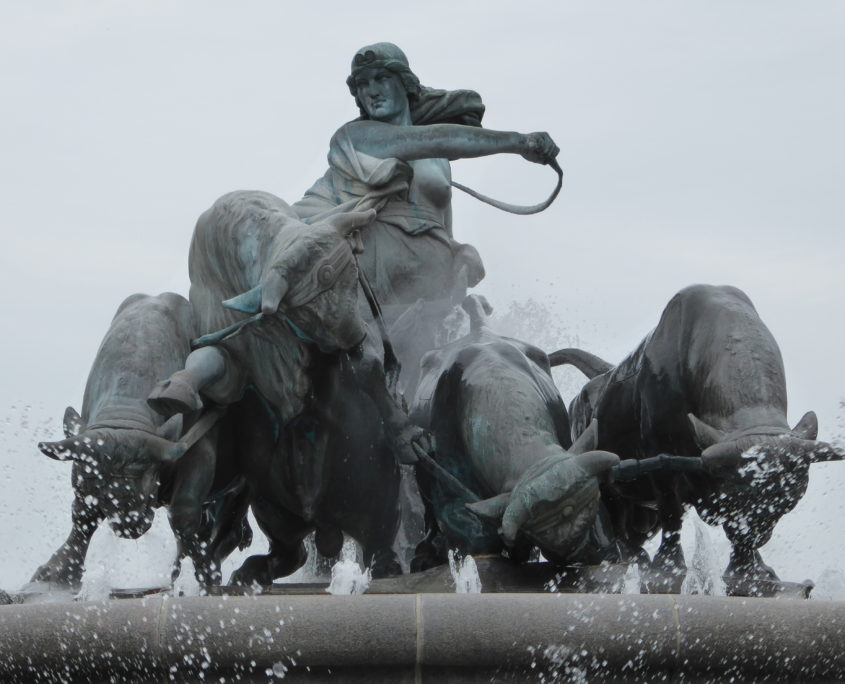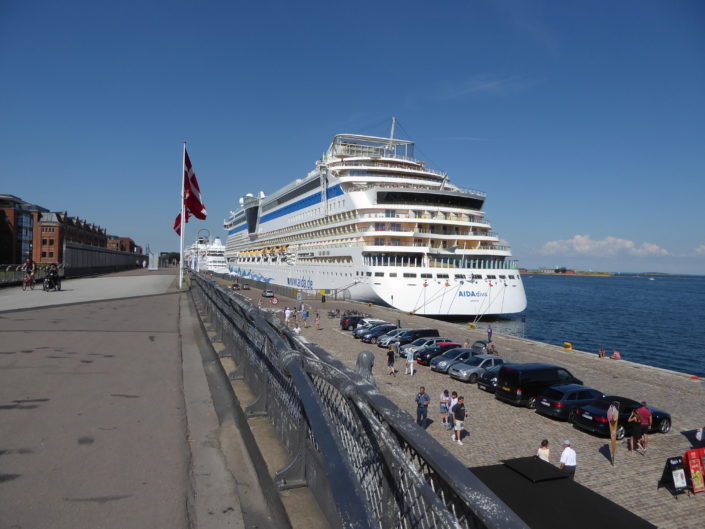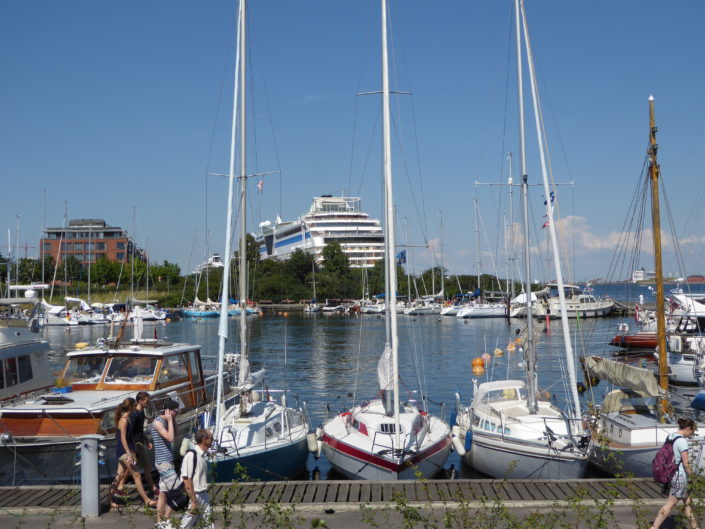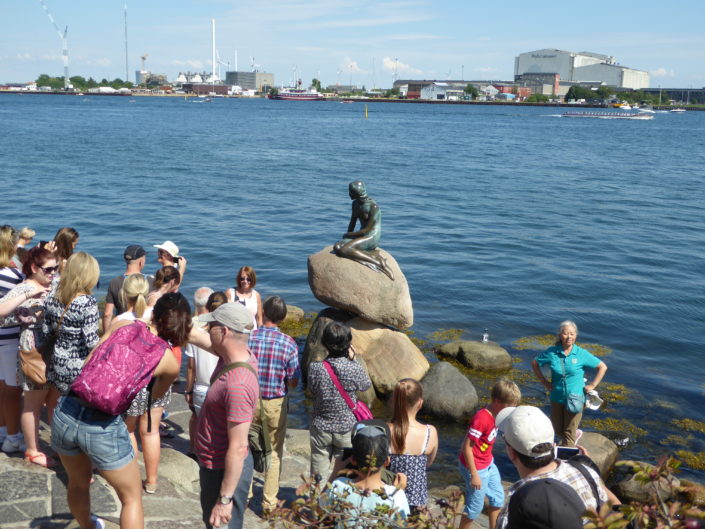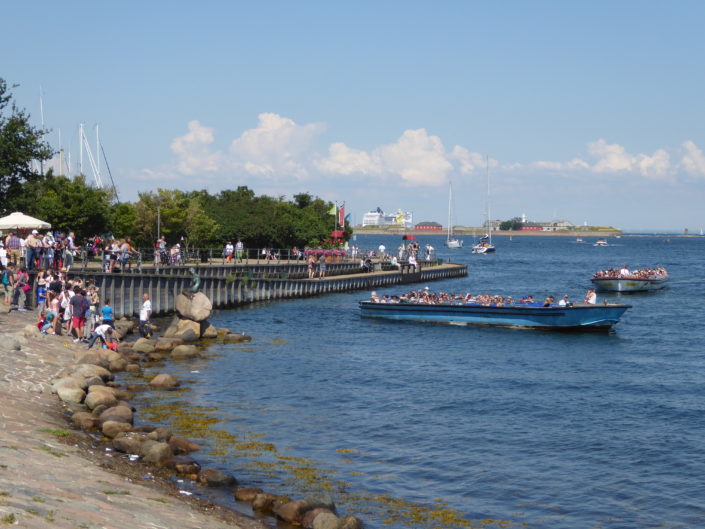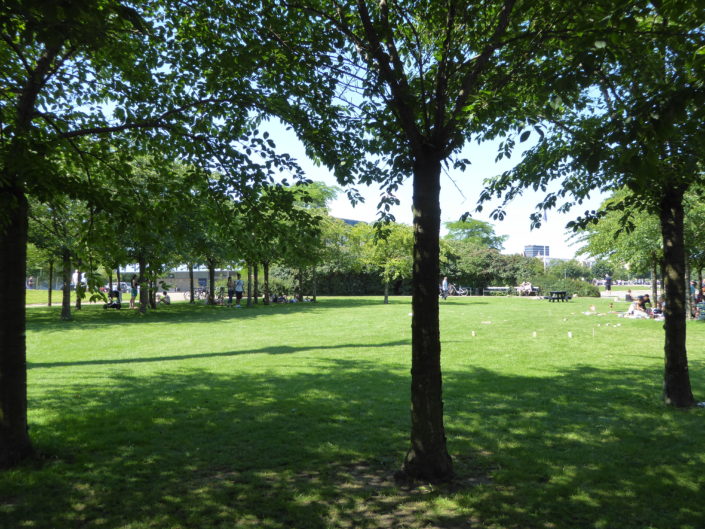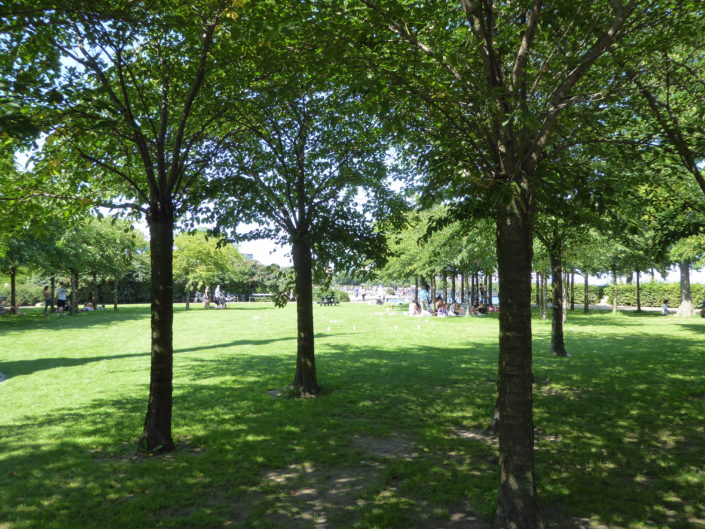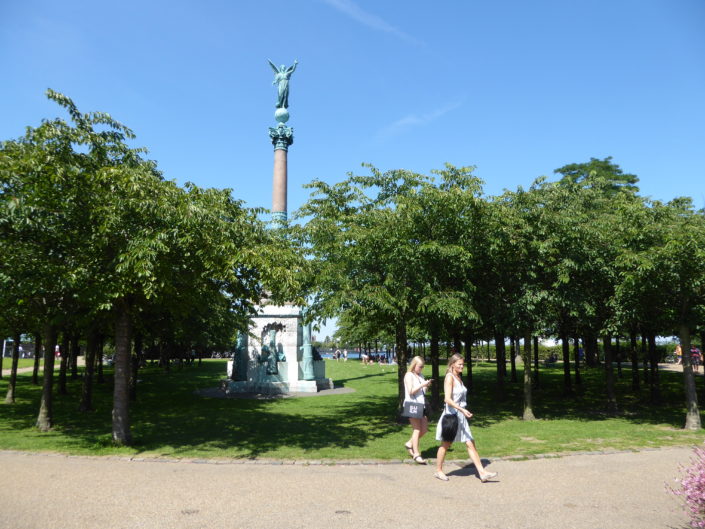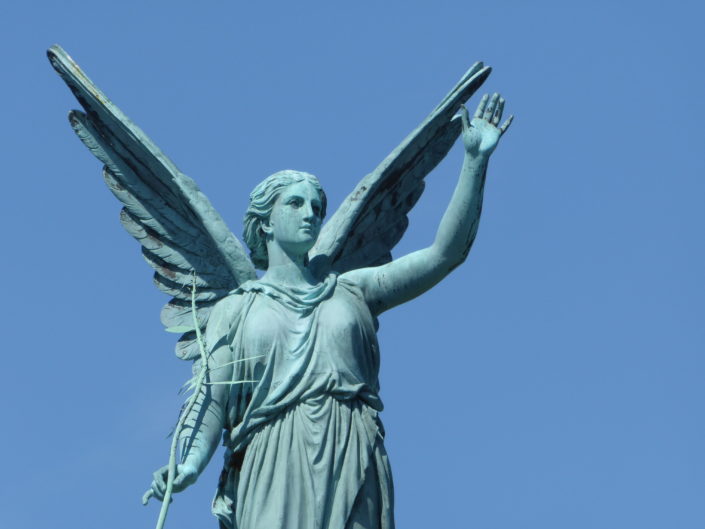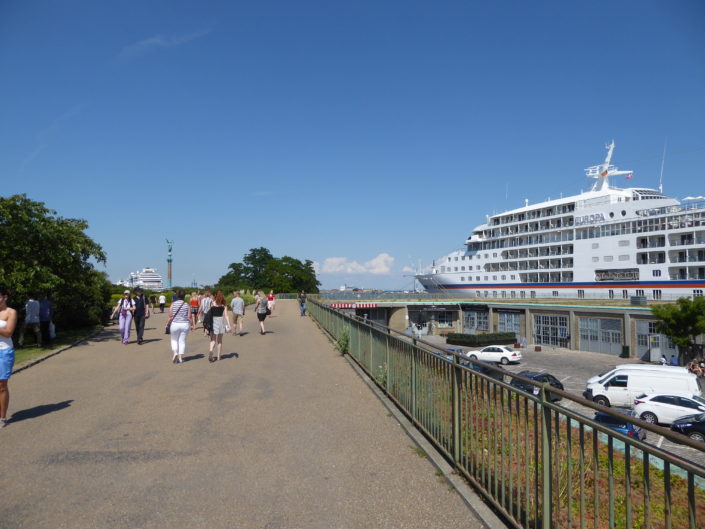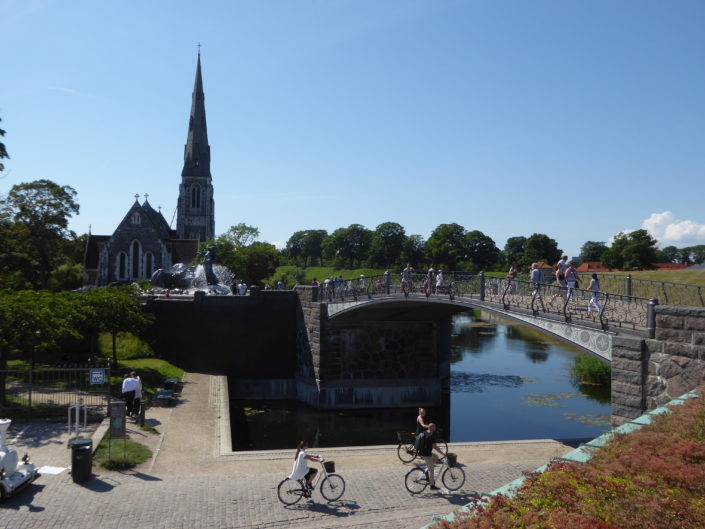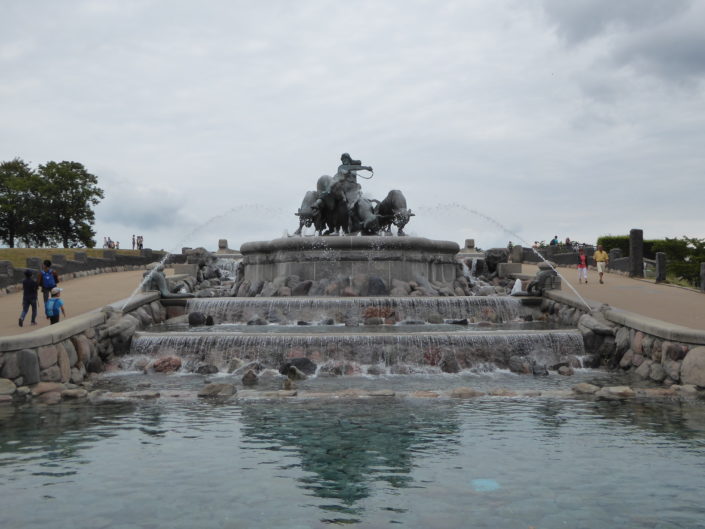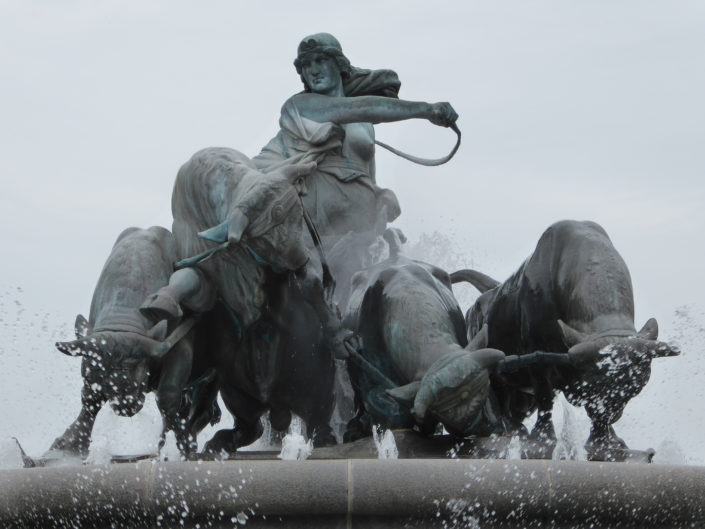Langelinie – Long Line
The Little Mermaid
–
Langelinie (English: Long Line) is a pier, promenade, and park in central Copenhagen, Denmark, and the home of The Little Mermaid. The area has for centuries been a popular destination for excursions and strolls in Copenhagen. Many cruise ships arriving in Copenhagen also berth at Langelinie Pier.
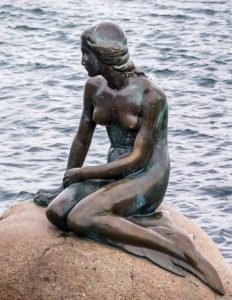 The name Langelinie goes back to the middle of the 17th century when it referred to an idyllic path along the Øresund coast that rounded Kastellet (the citadel) and continued towards a lime kiln north of the city. For a long time, the stretch was a military area where civilians were not granted access.
The name Langelinie goes back to the middle of the 17th century when it referred to an idyllic path along the Øresund coast that rounded Kastellet (the citadel) and continued towards a lime kiln north of the city. For a long time, the stretch was a military area where civilians were not granted access.
Eventually, a beach promenade and a park for the Bourgeoisie were made but with access only on payment. Not until 1848 did the area become open to everybody.
In 1862 it was decided to dig out the area to allow access for the largest ocean-going vessels and use the materials removed for landfills along the coast. It was decided to create a free port in the area north of Kastellet at the site of the Langelinie promenade.
In 1894 the work was completed and Copenhagen had got an entirely new harbor front. The old beach promenade with Bourgeois mansions had turned into the street Strandboulevarden located several hundred meters inland and the beach had turned into harbor basins. Langelinie became now a pier on the other side of that harbor basin.
The Little Mermaid (Danish: Den Lille Havfrue) is a bronze sculpture placed on a rock by the waterside at the Langelinie promenade.
Based on the fairy tale of the same name by Danish author Hans Christian Andersen, the small and unimposing statue is a Copenhagen icon and has been a major tourist attraction since 1913.
The statue was commissioned in 1909 by Carl Jacobsen, son of the founder of Carlsberg, who had been fascinated by a ballet about the fairytale in Copenhagen’s Royal Theatre and asked the ballerina, Ellen Price, to model for the statue. The sculptor Edvard Eriksen created the bronze statue, which was unveiled on August 23, 1913.
Aside from the statue on display, thirteen copies of the statue are located around the world, including Solvang, California; Kimballton, Iowa; Piatra Neamţ, Romania; Torrejón de Ardoz (Madrid), Spain; and a half-sized copy in Calgary, Canada. The grave of Danish-American entertainer Victor Borge includes a copy as well.
The Langelinie Park stretches from Esplanaden in the south to Langelinie Marina and the base of the Langelinie Pier in the north. The park contains numerous monuments, buildings, statues, and a playground. Among these are the Gefion Fountain, the Ivar Huitfeldt Column, and The Little Mermaid.
Langelinie Marina was established in the 1890s. Its purpose was to provide the workers with a chance to have a small boat, enabling them to supplement their incomes with a bit of fishing. Copenhagen rowing clubs have for many years had their base at the marina.
Close by is the memorial of Ejnar Mikkelsen, a Danish polar explorer, and author. He is most known for his expeditions to Greenland.
The Langelinie Pier has a water depth allowing big ocean-going vessels to tie up. In that area, there is a bronze sculpture of a polar bear with cubs, memorials for MS Jutlandia, and the arctic explorer Ludvig Mylius-Erichsen.
The Gefion Fountain features a large-scale group of oxen being driven by the Norse goddess Gefjun. It is located near Nordre Toldbod and immediately south of Langelinie. It is used as a wishing well.
The fountain illustrates the mythical story of the creation of Zealand – the island on which Copenhagen is located. According to the legend, the Swedish king Gylfi promised Gefjun the territory she could plow in a night. She turned her four sons into oxen, and the territory they plowed out of the earth was then thrown into the Danish sea between Scania and the island of Fyn to become Zealand. The hole became a lake now identified as Vänern – Sweden’s largest lake.
The Ivar Huitfeldt Column is a monument built to commemorate the death of Admiral Ivar Huitfeldt and his men in a naval battle off Stevns during the Great Northern War.
The monument consists of a marble column topped by a statue of Victoria. Four bronze reliefs at its foot feature Huitfeldt’s portrait, his coat of arms, a ship, and a text. The design incorporates the cannonballs barrels and the ship’s anchor is attached to the plinth.

